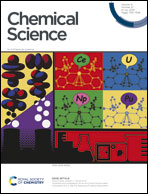Direct hydrogen selenide (H2Se) release from activatable selenocarbamates†
Abstract
Hydrogen selenide (H2Se) is a possible bioregulator, potential gasotransmitter, and important precursor in biological organoselenium compound synthesis. Early tools for H2Se research have benefitted from available mechanistic understanding of analogous small molecules developed for detecting or delivering H2S. A now common approach for H2S delivery is the use of small molecule thiocarbamates that can be engineered to release COS, which is quickly converted to H2S by carbonic anhydrase. To expand our understanding of the chemical underpinnings that enable H2Se delivery, we investigated whether selenocarbamates undergo similar chemistry to release carbonyl selenide (COSe). Using both light- and hydrolysis-activated systems, we demonstrate that unlike their lighter thiocarbamate congeners, selenocarbamates release H2Se directly with concomitant isocyanate formation rather than by the intermediate release of COSe. This reaction mechanism for direct H2Se release is further supported by computational investigations that identify a ΔΔG‡ ∼ 25 kcal mol−1 between the H2Se and COSe release pathways in the absence of protic solvent. This work highlights fundamentally new approaches for H2Se release from small molecules and advances the understanding of reactivity differences between reactive sulfur and selenium species.



 Please wait while we load your content...
Please wait while we load your content...